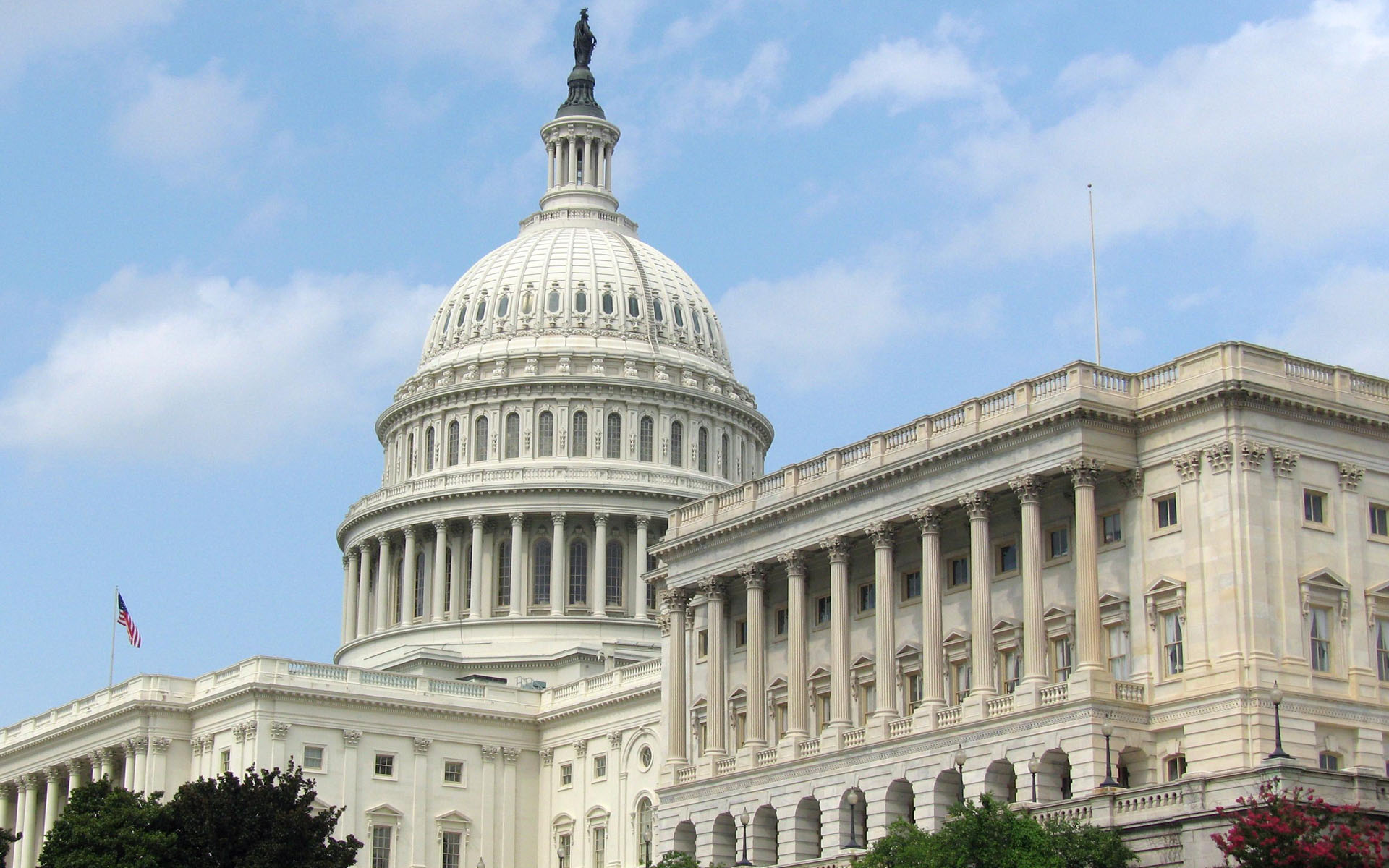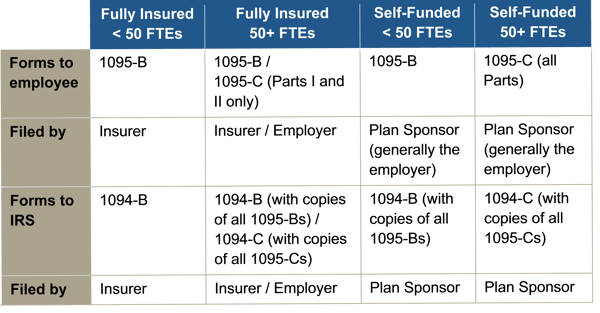
by admin | Dec 21, 2017 | Flexible Spending Accounts, Human Resources, IRS
 As 2017 comes to a close, it’s time to act on the money sitting in your Flexible Spending/Savings Account (FSA). Unlike a Health Savings Account or HSA, pre-taxed funds contributed to an FSA are lost at the end of the year if an employee doesn’t use them, and an employer doesn’t adopt a carryover policy. It’s to your advantage to review the various ways you can make the most out of your FSA by year-end.
As 2017 comes to a close, it’s time to act on the money sitting in your Flexible Spending/Savings Account (FSA). Unlike a Health Savings Account or HSA, pre-taxed funds contributed to an FSA are lost at the end of the year if an employee doesn’t use them, and an employer doesn’t adopt a carryover policy. It’s to your advantage to review the various ways you can make the most out of your FSA by year-end.
Book Those Appointments
One of the first things you should do is get those remaining appointments booked for the year. Most medical/dental/vision facilities book out a couple of months in advance, so it’s key to get in now to use up those funds.
Look for FSA-Approved Everyday Health Care Products
Many drugstores will often advertise FSA-approved products in their pharmacy area, within a flyer, or on their website. These products are usually tagged as “FSA approved”. Many of these products include items that monitor health and wellness – like blood pressure and diabetic monitors – to everyday healthcare products like children’s OTC meds, bandages, contact solution, and certain personal care items. If you need to use the funds up before the end of the year, it’s time to take a trip to your local drugstore and stock up on these items.
Know What’s Considered FSA-Eligible
Over the last several years, the IRS has loosened the guidelines on what is considered eligible under a FSA as more people became concerned about losing the money they put into these plans. There are many items that are considered FSA-eligible as long as a prescription or a doctor’s note is provided or kept on file. Here are a few to consider:
- Acupuncture. Those who suffer from chronic neck or back pain, infertility, depression/anxiety, migraines or any other chronic illness or condition, Eastern medicine may be the way to go. Not only are treatments relatively inexpensive, but this 3,000 year old practice is recognized by the U.S. National Institute of Health and is an eligible FSA expense.
- Dental/Vision Procedures. Dental treatment can be expensive—think orthodontia and implants. While many employers may offer some coverage, it’s a given there will be out-of-pocket costs you’ll incur. And, eye care plans won’t cover the cost of LASIK, but your FSA will. So, if you’ve been wanting to correct your vision without the aid of glasses or contacts, or your needing to get that child braces, using those FSA funds is the way to go.
- Health-boosting Supplements. While you cannot just walk into any health shop and pick up performance-enhancing powder or supplements and pay with your FSA card, your doctor may approve certain supplements and alternative options if they deem it to benefit your health and well-being. A signed doctor’s note will make these an FSA-eligible expense.
- Smoking-cessation and Weight-Loss Programs. If your doctor approves you for one of these programs with a doctor’s note deeming it’s medically necessary to maintain your health, certain program costs can be reimbursed under an FSA.
Talk to Your HR Department
When the IRS loosened guidelines a few years ago, they also made it possible for participants to carry over $500 to the next year. Ask Human Resources if your employer offers this, or if they provide a grace period (March 15 of the following year) to turn in receipts and use up funds. Employers can only adopt one of these two policies though.
Plan for the Coming Year
Analyze the out-of-pocket expenses you incurred this year and make the necessary adjustments to allocate what you believe you’ll need for the coming year. Take advantage of the slightly higher contribution limit for 2018. If your company offers a FSA that covers dependent care, familiarize yourself with those eligible expenses and research whether it would be to your advantage to contribute to as well.
Flexible Spending/Saving Accounts can be a great employee benefit offering tax advantages for employees that have a high-deductible plan or use a lot of medical. As a participant, using the strategies listed above will help you make the most out of your FSA.

by admin | Dec 8, 2017 | Hot Topics, Human Resources, Workplace
 The end of the year is upon us and a majority of companies celebrate with an end-of-year/holiday party. Although the trend of holiday parties has diminished in recent years, it’s still a good idea to commemorate the year with an office perk like a fun, festive party.
The end of the year is upon us and a majority of companies celebrate with an end-of-year/holiday party. Although the trend of holiday parties has diminished in recent years, it’s still a good idea to commemorate the year with an office perk like a fun, festive party.
BENEFITS OF A YEAR-END CELEBRATION
- Holiday staff parties are a perfect way to thank your employees for a great year. All employees want to feel appreciated and valued. What better way to serve this purpose, than with an end of the year office celebration. Hosting a night out to honor your employees during a festive time of year boosts morale. And if done right, your party can jump start the new year with refreshed, productive employees.
- End-of-year celebrations allow employees to come together outside of their own team. The average American will spend 90,000 hours (45 years) of their life at work. Unless you have a very small office, most employees only engage in relationships within their department. When employees have a chance to mingle outside of their regular 9 to 5 day, they’ll build and cultivate relationships across different teams within the organization; creating a more loyal, cohesive and motivated
- Seasonal parties can provide employers insight on those who work for them. Spending the evening with your employees in a more casual and relaxed atmosphere may reveal talents and ideas you may not have otherwise seen during traditional work hours.
CREATING THE RIGHT FIT
Regardless of office size, if planned right, employers can make a holiday party pop, no matter your budget. Whether this is your first go at an end-of-year celebration for your employees, or you host one every year, keep a few things in mind:
- Plan early. Establish a steering committee to generate ideas for your holiday party. Allow the committee to involve all employees early on in the process. Utilize voting tools like Survey Monkey or Outlook to compile employee votes. This engages not only your entire workforce, but serves you as well when tailoring your party to fit your culture.
- Create set activities. Engaging employees in some type of organized activity not only eases any social anxiety for them and their guests, it cultivates memories and allows colleagues to get to know each other. Consider a “Casino Night”, a photo booth (or two if your company can justify to size), an escape room outing—anything that will kick the night off with ease.
- Incorporate entertainment during the dinner. Have team leads or management members come up with fun awards that emphasize character traits, strengths, and talents others may not know of. This is a great way to create cohesiveness, build relationships, and have your employees enjoy a good laugh at dinner.
- Offer fun door prizes every 15 minutes or so. Prizes don’t have to be expensive to have an impact on employees, just relevant to them. However, with the right planning you may be able to throw in a raffle of larger gift items as well. Just keep in the specific tax rules when it relates to gift-giving. Gift cards associated with a specific dollar amount available to use at any establishment, and larger ticket items, can be subject to your employees having to claim income on them and pay the tax.
- Make the dress code inclusive of everyone. Employees should not feel a financial pinch to attend a holiday office party. Establish a dress code that fits your culture, not the other way around.
TAKE AWAY TIPS FOR A SUCCESSFUL HOLIDAY PARTY
According to the Society of Human Resource Management, statistics show in recent years only 65% of employers have offered holiday parties—down from 72% five years ago. Consider the following tips when hosting your next year-end celebration.
- Keep it light. Eliminate itineraries and board-room like structure. Choose to separate productivity/award celebrations and upcoming year projections from your holiday party.
- Invite spouses and significant others to attend the party. Employees spend a majority of their week with their colleagues. Giving employees this option is a great way to show you value who they spend their time with outside of work.
- Allow employees to leave early on a work day to give them time to get ready and pick up who is attending the party with them.
- Show how you value your employees by chatting with them and meeting their guests.
- Provide comfortable seating areas where employees can rest, eat and talk. Position these in main action areas so no one feels anti-social for taking a seat somewhere.
- Consider tying in employees that work in different locations. Have a slideshow running throughout the night on what events other office locations have done throughout the year.
- Create low-key conversation starters and get people to chat it up. This is valuable especially for those that are new to the company and guests of your employees. Incorporate trivia questions into the décor and table settings. Get them to engage by tying in a prize.
- Keep the tastes and comfort level of your employees in mind. Include a variety of menu items that fit dietary restrictions. Not all employees drink alcohol and not all employees eat meat.
- Limit alcohol to a 2 ticket system per guest. Opt for a cash bar after that to reduce liability.
- Provide access to accommodations or coordinate transportation like Uber or Lyft to get your employees somewhere safely after the party if they choose to drink.
Ultimately, holiday parties can still be a value-add for your employees if done the right way. Feel free to change it up from year to year so these parties don’t get stale and continue to fit to your company’s culture. Contemplate new venues, ideas and activities and change up your steering committee to keep these parties fresh. Employees are more likely to enjoy themselves at an event that fits with their lifestyle, so don’t be afraid to get creative!

by admin | Nov 14, 2017 | ACA, Group Benefit Plans, Human Resources, IRS
 October was a busy month in the employee benefits world. President Trump announced a new Acting Secretary for the U.S. Department of Health and Human Services (HHS). Eric Hargan fills the position vacated by Tom Price, who resigned in late September 2017. The U.S. Department of Labor (DOL) issued a proposed rule to delay a disability claims procedure regulation’s applicability date and HHS released its proposed rule on benefits and payment parameters for 2019. The U.S. Department of the Treasury (Treasury) issued its Priority Guidance Plan for projects it intends to complete during the first half of 2018.
October was a busy month in the employee benefits world. President Trump announced a new Acting Secretary for the U.S. Department of Health and Human Services (HHS). Eric Hargan fills the position vacated by Tom Price, who resigned in late September 2017. The U.S. Department of Labor (DOL) issued a proposed rule to delay a disability claims procedure regulation’s applicability date and HHS released its proposed rule on benefits and payment parameters for 2019. The U.S. Department of the Treasury (Treasury) issued its Priority Guidance Plan for projects it intends to complete during the first half of 2018.
DOL Proposes Delay to Final Disability Claims Procedures Regulations’ Applicability Date
The DOL issued a proposed rule to delay the applicability date of its final rule that amends the claims procedure requirements applicable to ERISA-covered employee benefit plans that provide disability benefits. The DOL’s Fact Sheet contains a summary of the final rule’s requirements.
The DOL is delaying the applicability date from January 1, 2018, to April 1, 2018, to consider whether to rescind, modify, or retain the regulations and to give the public an additional opportunity to submit comments and data concerning the final rule’s potential impact.
CMS Releases 2019 Benefits Payment and Parameters Proposed Rule
The Centers for Medicare & Medicaid Services (CMS) released a proposed rule and fact sheet for the 2019 Benefit Payment and Parameters. The proposed rule is intended to increase individual market flexibility, improve program integrity, and reduce regulatory burdens associated with the Patient Protection and Affordable Care Act (ACA) in many ways, including updates and annual provisions to:
- Essential health benefits
- Small Business Health Options Program (SHOP)
- Special enrollment periods (SEPs)
- Exemptions
- Termination effective dates
- Medical loss ratio (MLR)
CMS usually finalizes the Benefit Payment and Parameters rule in the first quarter of the year following the proposed rule’s release. November 27, 2017, is the due date for public comments on the proposed rule.
Almost all the topics addressed in the proposed rule would affect the individual market and the Exchanges, particularly the Small Business Health Options Program (SHOP) Exchanges.
Of interest to small group health plans, CMS proposes to change how states will select essential health benefits benchmark plans. If CMS keeps this change in its final rule, then it will affect non-grandfathered small group health plans for benefit years 2019 and beyond.
Treasury Issues its Priority Guidance Plan
The Treasury issued its 2017-2018 Priority Guidance Plan that lists projects that it intends to complete by June 30, 2018, including:
- Guidance on issues related to the employer shared responsibility provisions
- Regulations regarding the excise tax on high cost employer-provided coverage (“Cadillac tax”)
- Guidance on Qualified Small Employer Health Reimbursement Arrangements (QSE HRAs)
By Danielle Capilla
Originally Published By United Benefit Advisors

by admin | Nov 9, 2017 | ACA, Human Resources, IRS

Instructions for both the 1094-B and 1095-B and the 1094-C and 1095-C were released, as were the forms for 1094-B, 1095-B, 1094-C, and 1095-C.
Reporting will be due early in 2018, based on coverage in 2017. For calendar year 2017, Forms 1094-C, 1095-C, 1094-B, and 1095-B must be filed by February 28, 2018, or April 2, 2018, if filing electronically. Statements to employees must be furnished by January 31, 2018. In late 2016, a filing deadline was provided for forms due in early 2017, however it is unknown if that extension will be provided for forms due in early 2018. Until employers are told otherwise, they should plan on meeting the current deadlines.
All reporting will be for the 2017 calendar year, even for non-calendar year plans.
The reporting requirements are in Sections 6055 and 6056 of the ACA. The major reporting requirements are:


by admin | Nov 3, 2017 | Group Benefit Plans, HIPAA, Human Resources
 Employers who are designing a health and welfare benefit plan for their employees often wonder about the rules relating to setting premiums for employees. Employers generally have significant flexibility in this part of their plan’s design. Common structures contemplated by employers include, but are not limited to:
Employers who are designing a health and welfare benefit plan for their employees often wonder about the rules relating to setting premiums for employees. Employers generally have significant flexibility in this part of their plan’s design. Common structures contemplated by employers include, but are not limited to:
- Charging all employees a flat amount for their health plan
- Charging employees a percentage of the premium for the health plan, with the percentage changing as employees move between tiers (self, self plus one, self plus family)
- Giving employees a set dollar amount that they can use to offset the cost of whatever plan and plan tier they enroll in
Employers are also interested in setting different contribution structures for different groups of employees. Sometimes this is due to a geographic difference between employees, job types, staff versus management, and more. Employers may wish to give lower-paid employees more employer-provided money; sometimes employers wish to give managers or executive staff more employer-provided money.
Employers should be aware that there are different nondiscrimination requirements to consider.
Generally, under HIPAA non-discrimination rules, employers have discretion when structuring their benefits plans and may make distinctions among employee populations regarding access to and the level of benefits offered. Plans may differ among employees only on “bona fide employment-based classifications” consistent with the employer’s usual business practice. Examples that would satisfy this requirement include salaried, hourly, full-time, part-time, type of job, geographic location, date of hire, division, subsidiary, business unit, and profit center distinctions.
If an employer’s proposed structure meets these basic HIPAA requirements, then the employer needs to review the applicable nondiscrimination requirements under Internal Revenue Code Section 125 (for cafeteria plans) and Section 105(h) (for self-funded plans). If the employer’s plan is subject to these rules, at a most basic level, the plan cannot favor highly compensated individuals. Sometimes an innocent plan design can lead to an employer failing the nondiscrimination requirements under Section 125 or 105(h) without the employer intentionally favoring the highly compensated employees. Many employers also erroneously assume that none of their employees fall into the “highly compensated” category, so the rules do not apply to them. As a best practice, any time an employer has a plan design with different levels of employer contributions, the employer should run the applicable testing to ensure its plan is compliant.
Under Section 125, benefit plans cannot discriminate in favor of highly compensated individuals or key employees.
By Danielle Capilla
Originally Published By United Benefit Advisors

by admin | Oct 26, 2017 | Benefit Management, Benefit Plan Tips, Tricks and Traps, Human Resources

Fall. With it comes cooler temperatures’, falling leaves, warm seasonal scents like turkey and pumpkin pie, and Open Enrollment. It goes without saying; employees who understand the effectiveness of their benefits are much more pleased with those packages, happier with their employers, and more engaged in their work. So, as your company gears up for a new year of navigating Open Enrollment, here are a few points to keep in mind to make the process smoother for both employees and your benefits department. Bonus: it will lighten the load for both parties alike during an already stress-induced season.
Communicate Open Enrollment Using a Variety of Mediums
Advertise 2018 benefit changes to employees by using a variety of mediums. The more reminders and explanation of benefits staff members have using more than one mode of media, the more likely employees will go into Open Enrollment with more knowledge of your company’s benefit options and when they need to have these options completed for the new year.
- Consider explainer videos to simplify the amount of emails and paperwork individuals need to review come Open Enrollment time. These videos can increase the bottom line as well, eliminating the high cost of print material.
- Opt for placards placed throughout your high-traffic areas. Communicate benefit options and remind employees of Open Enrollment dates for the new year by posting in such areas as the lobby, break room and bathroom stalls.
- Choose SMS texting. Today, over 97% of individuals use text. Ninety-eight percent of those that use text open messages within the first three minutes of receiving them; 6-8 times higher than the engagement rate for email. Delivering a concise message to employees’ mobile devices creates more touch points along the Open Enrollment journey. The key, however, is making it quick so as to entice your employees to take action.
- Promote apps and in-app tools. Push notifications and apps like Remind 101 can help drive employee engagement during Open Enrollment season simply by providing short messages reminding them to enroll. Notifications like these can also be tailored to unique employee groups based on location, job level, eligibility status and more.
Utilize Mobile Apps and Web Portals for Open Enrollment
Now that your company has communication down pat for Open Enrollment, simplify the arduous task employees have of enrolling for the coming year by going paperless. Utilize web portals through benefit brokers and companies like ADP to eliminate the hassle of employees having to fill out paperwork both at renewal, and at the time of hire. With nearly three quarters of individuals in the United States checking their phone once an hour and 90% percent of this time is spent using one app or another as a main source of communication, mobile apps can make benefits engagement much easier due to the anywhere/anytime accessibility they offer.
The personal perks for employees are great too! Staff members with a major lifestyle event can make benefit adjustments quickly with the ease of mobile apps. Employees recognize this valuable and time-saving trend and enjoy having this information at their fingertips.
Open Enrollment season can be a stressful time but hopefully these tips will help for a smoother transition into the next year for your business. Simple things like using explainer videos, placing reminders in high traffic areas and utilizing mobile apps and text messaging can save time and stress in the long run for your employees and benefit department.

 As 2017 comes to a close, it’s time to act on the money sitting in your Flexible Spending/Savings Account (FSA). Unlike a Health Savings Account or HSA, pre-taxed funds contributed to an FSA are lost at the end of the year if an employee doesn’t use them, and an employer doesn’t adopt a carryover policy. It’s to your advantage to review the various ways you can make the most out of your FSA by year-end.
As 2017 comes to a close, it’s time to act on the money sitting in your Flexible Spending/Savings Account (FSA). Unlike a Health Savings Account or HSA, pre-taxed funds contributed to an FSA are lost at the end of the year if an employee doesn’t use them, and an employer doesn’t adopt a carryover policy. It’s to your advantage to review the various ways you can make the most out of your FSA by year-end.





